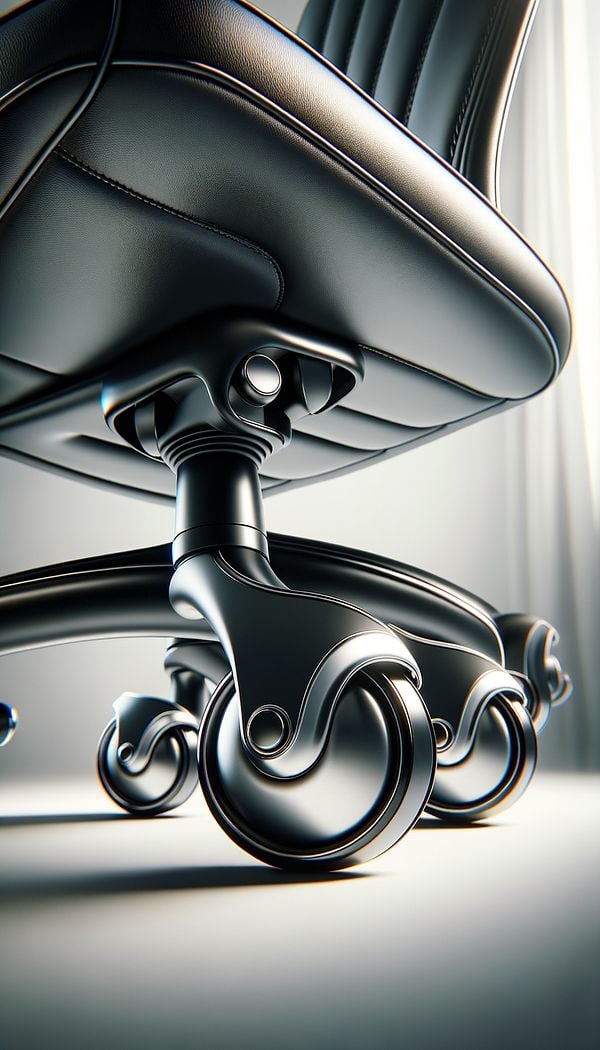What is Casters?
Casters are small wheels or rollers designed to be attached to the bottom of an object to enable it to move easily.
Description
Casters are an integral component in the world of interior design, offering both functionality and versatility to furniture items. These small wheels or rollers are usually mounted to the bottom of furniture pieces, such as chairs, tables, and movable cabinets, allowing them to glide smoothly across the floor with minimal effort. This attribute adds a new dimension to furniture, facilitating ease of movement and adaptability to changing layouts and uses within a space.
The variety in caster design is as wide as the array of furniture they can be attached to. They come in different sizes, materials, and styles to suit various requirements in terms of load capacity, flooring type, and aesthetic appeal. For example, rubber and polyurethane casters are prized for their ability to roll quietly and not scratch hardwood floors, while larger, heavy-duty casters might be preferred for industrial pieces that need to bear substantial weight.
Furthermore, casters can be locking or non-locking. Locking casters include a mechanism to keep the furniture stationary when needed, adding an extra level of safety and stability. This feature is especially valuable in environments where accidental movement could pose a risk, such as in offices or medical settings. In summary, casters enhance the functionality, mobility, and adaptability of furniture, making them a key consideration in interior design projects.
Usage
In an office setting, chairs with casters provide employees with the ability to easily move within their workspace, promoting a dynamic and flexible environment. In a home, a coffee table on casters can be quickly moved aside to create space for activities or to alter the room's layout for entertaining guests. Furthermore, in a medical facility, equipment on casters can be transported swiftly from one room to another, improving operational efficiency.
FAQs
-
Can casters be added to any type of furniture?
Most furniture can be fitted with casters, provided it has stable and compatible attachment points. However, consulting with a professional or the furniture manufacturer is advisable to ensure the furniture's structure can support the addition without compromising its integrity or safety.
-
How do I select the right type of casters for my furniture?
Consider the furniture's weight, the type of flooring, and whether stationary support is occasionally needed. For heavier pieces or on carpet, larger and more durable casters might be ideal. For hardwood floors, softer materials like rubber can prevent scratches. Locking casters are useful if the furniture needs to be secured in place sometimes.
-
Are all casters suitable for all types of flooring?
No, the material and design of the caster can affect how well it rolls on different types of flooring. For example, casters made of softer materials like rubber are better for hardwood floors to avoid scratches, while harder casters might be more suitable for carpets or industrial surfaces.
Practical Application
When incorporating casters into your furniture design or selection, always consider the environment the piece will be used in. Test the movement on the specific type of flooring present to ensure compatibility and ease of use. Regular maintenance, like cleaning the wheels to remove debris, will extend their functionality and longevity. Choosing the right caster can enhance the mobility and versatility of your furniture, contributing positively to the layout and dynamism of a space.
-
Furniture Types599 articles
-
Technical Terms38 articles
-
Storage & Organization79 articles
-
Accessibility & Ergonomics30 articles
-
EastlakeEastlake is a design movement named after Charles Eastlake.
-
DecoDeco, short for Art Deco, is a visual arts design style that emerged in the 1920s and 1930s.
-
Tuckaway TableA tuckaway table is a space-saving furniture piece designed to be easily folded or collapsed for storage.
-
LineLine in interior design refers to the continuous mark or edge that defines shapes and forms, and guides the eye movement within a space.
-
BacksplatA backsplat is the central piece of wood located on the back of a chair, running vertically to connect the seat to the top rail.
